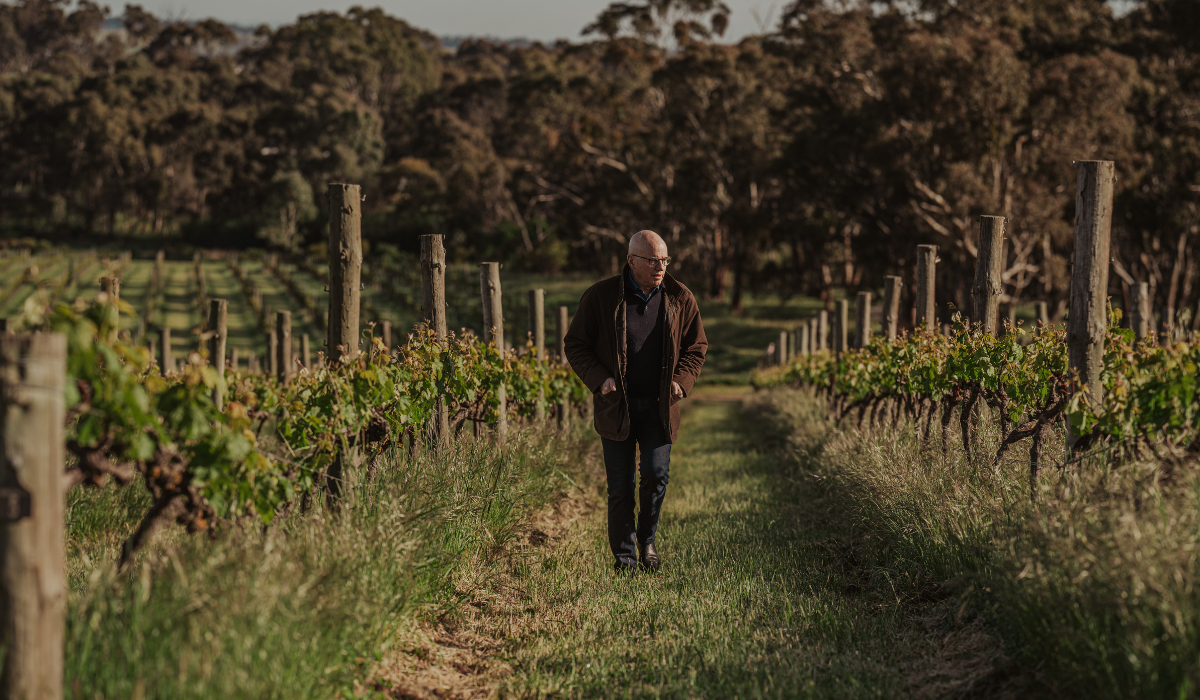The story of how life partners Jeff Grosset and Stephanie Toole met is one of opposite forces coming together.
He was a winemaker in the Clare Valley. She was a wine wholesaler in Perth.
He was quietly spoken, almost reserved. She spoke her mind.
He was already acknowledged as a winemaker to watch. She drank and sold wine; she didn’t make it.
The year was 1992.
In the intervening decades, both have become noted winemakers working out of the Clare Valley.
Now, in a year in which both celebrate milestones – Grosset Wines’ belated, Covid-affected 40th and Mount Horrocks’ 30th – the vinous forces that brought them together and keep their inventive sparks alive, but very much separate, remain strong.

The one grape they both agree on and make – riesling – perfectly illustrates each winemaker’s individuality.
Riesling is Jeff Grosset’s life work, his holy grail, a search that started in the '80s and saw a few incarnations of style before he settled on three defining rieslings from three vineyards – the elegant Springvale from the Watervale subregion; the powerful, intense Polish Hill; and the European-style, off-dry Alea from the Rockwood vineyard. Strikingly fine, the three rieslings have been joined in the last year by the textural and layered beauty of the G110 riesling, which comes with a price tag of $123 a bottle. With G110, Jeff Grosset ups the riesling ante and his winemaking range.
Stephanie Toole, has admitted that she loved Grosset’s Polish Hill riesling even before she met the winemaker, and after falling in love with the man felt that making anything close to his Polish Hill riesling was “unobtainable.” Instead, she concentrates on a Watervale riesling, giving her partner’s own Watervale riesling (Springvale) a run for his money with a style that is immediately approachable upon release, boasting a memorable fragrance, delicacy and citrus intensity.
As a recent retrospective tasting of a selection of rieslings produced by both makers going back to 2009 revealed, all are blessed with an ability to age gracefully.
But riesling is where the similarity between the partners’ winemaking talents ends (well, almost).

Nero d’Avola. Now, there’s a grape that few in the Clare Valley would have considered plonking in the ground. Neither had Stephanie until a chance meeting with a glass of the Sicilian red in a Roman wine bar in 2003. “It was love at first sight,” she says. “I didn’t do any research. I just fell in love.”
“I thought originally it would blend with shiraz with its cherry flavours and high acid,” she adds.
That thought didn’t last long.
Mount Horrocks’ nero d’Avola is a revelation: stunning in aromatics, juicy in cherry-red berry fruit with a spray of savoury tannins to complete the Italian-esque picture.
Jeff also goes down an Italian route with his Apiana fiano.
His choice of fiano, the southern Italian white grape, was deliberate. After decades of producing fine featured wines showcasing scintillating acidity and drive, he was ready to explore a different side to his winemaking.
“I was looking for a textural component,” he says. “We are easing into more texture because people don’t expect it (from me).
“And it (fiano) wasn’t a big jump from where it hails from to where it grows in the Clare Valley.”
And the good news is we can expect more exploratory wines coming through in the future, including a wild ferment shiraz, all plummy, rich and radiant. The idea to enter shiraz territory, says Jeff, was Stephanie’s. “Some of my best ideas have come to me while Stephanie is talking to me,” he adds.

Amid this almost sudden rush of creativity, the stalwart collection of wines that drinkers expect from Grosset and Mount Horrocks remain. None more so than the interpretation each winemaker brings to cabernet sauvignon. One (Mount Horrocks) is 100 per cent cabernet, the other (Grosset’s Gaia) is a blend of cabernet sauvignon and up to 20 per cent cabernet franc. They appear and taste as chalk and cheese. I am loath to see them as the kind of competitors for the couple that, say, riesling is. Mount Horrocks at $60 is scented, juicy, supple and accessible. Gaia at $90 stands tall with great poise, a seamless depth of flavour built specifically to elude the rigours of age.
It is tempting to see Grosset and Mount Horrocks as sibling producers with some kind of common thread.
There have been those ignorant enough to suggest that Jeff makes Stephanie’s wine. Clearly, they have never met the woman.
From separate vineyards and grape varieties to different winegrowing philosophies – Grosset is organic, Toole is the lone biodynamic grower in Clare – and even separate his n’ hers wine presses at the winery they share, the couple and their wines retain separate identities.
And that’s the way it should be.
Latest Articles
Sign up to view these tasting notes and ratings
By becoming a member of Wine Companion, you'll have access to the largest database of wines in Australia.



